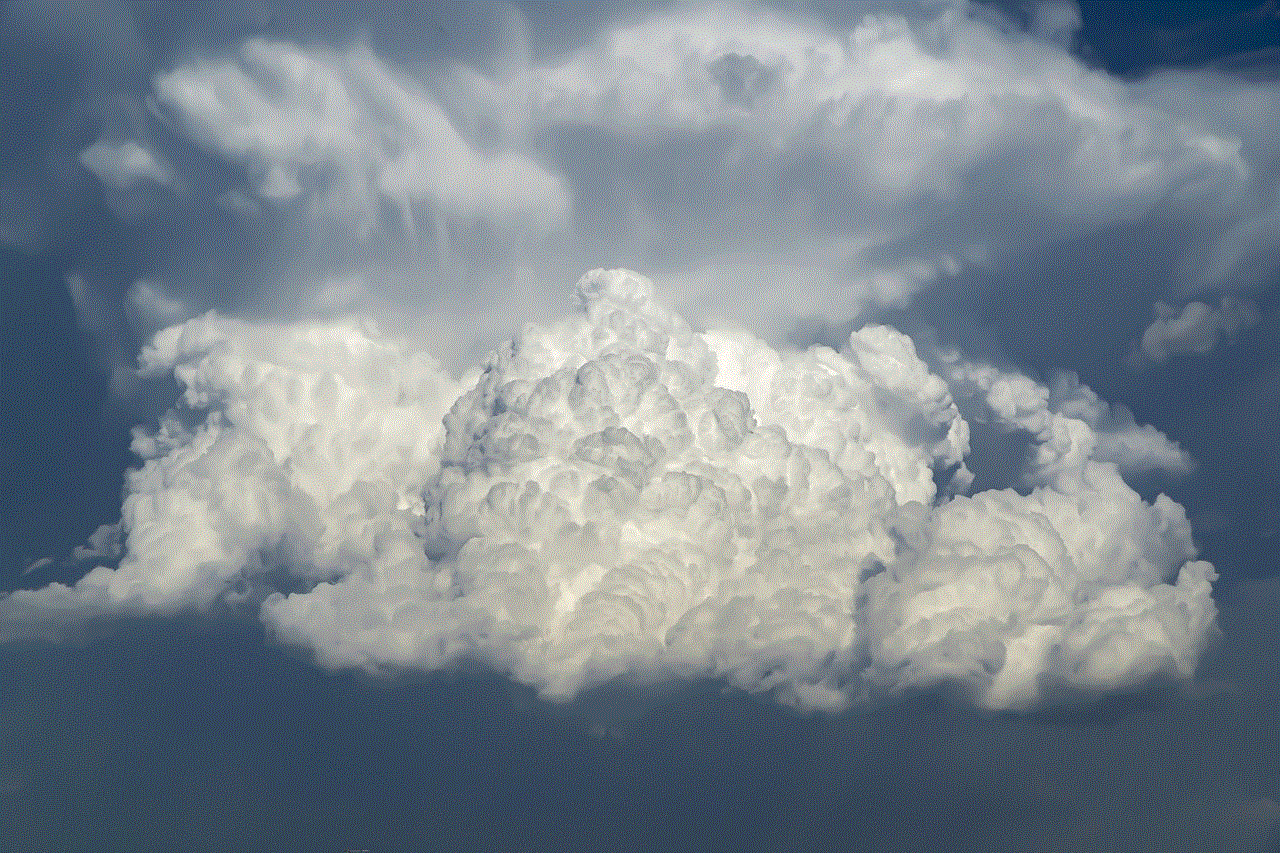where are blocked numbers on iphone
As our world becomes increasingly connected through technology, our phones have become an integral part of our daily lives. We use them to make calls, send messages, browse the internet, and even manage our schedules. However, with these conveniences come the downside of unwanted calls and messages. Luckily, iPhones have a feature that allows users to block numbers, providing a sense of control and security. In this article, we will explore everything you need to know about blocked numbers on an iPhone.
Firstly, let’s understand what exactly is a blocked number. A blocked number is any phone number that you have chosen to prevent from contacting you. This means that when someone from a blocked number tries to call, text, or FaceTime you, they will not be able to reach you. Instead, they will either receive a busy signal or an automated message stating that their call cannot be completed. This feature is especially useful for dealing with spam calls and messages, persistent telemarketers, or even people you no longer wish to communicate with.
Now, you might wonder, where can you find blocked numbers on an iPhone? The answer is simple – in your phone’s Settings app. To access the list of blocked numbers, follow these steps: go to Settings, then tap on Phone, and finally, tap on Call Blocking & Identification. Here, you will find a list of all the numbers you have blocked. You can also add new numbers to this list by tapping on the “Add New Number” option. It is worth noting that this feature is only available for iPhone models running iOS 7 and above.
But what if you want to unblock a number that you previously blocked? Well, that’s easy too. Simply go to the same setting, and swipe left on the number you wish to unblock. This will reveal an option to unblock the number. You can also go through the same process to remove a number from the list of blocked numbers. However, keep in mind that once you unblock a number, it will be able to contact you again, so be sure you want to unblock it before doing so.
One of the most common questions people have about blocked numbers on an iPhone is if the blocked person is notified of being blocked. The answer is no, they are not notified. When you block a number, the person from that number will not receive any indication that they have been blocked. They will simply not be able to reach you through calls, texts, or FaceTime. However, they may be able to infer that they have been blocked if you have previously communicated with them through iMessage, and they can no longer send you messages.
Another question that often arises is if the blocked person can still leave a voicemail. The answer is yes, they can. When someone calls you from a blocked number and reaches your voicemail, they will be able to leave a message. However, you will not receive a notification that you have a voicemail from a blocked number. To check for voicemails from blocked numbers, go to the Voicemail tab in the Phone app and tap on “Blocked Messages.”
It is also worth mentioning that blocking a number on your iPhone does not block it on all your Apple devices. For example, if you block a number on your iPhone, it will still be able to contact you through iMessage on your iPad or Mac. If you want to block a number across all your Apple devices, you will need to block it on each device individually.
Now that we have covered the basics of blocked numbers on an iPhone, let’s dive into some advanced features. Did you know that you can block unknown callers on your iPhone? This feature is particularly useful for those who receive a lot of spam calls from unknown numbers. To enable this feature, go to Settings, then tap on Phone, and finally, toggle on the option for Silence Unknown Callers. This will automatically silence calls from numbers that are not in your contacts, send them to voicemail, and label them as “Unknown Caller” in your recent calls list.
Another useful feature is the ability to block specific contacts from sending you messages. This is different from blocking a number, as it only blocks messages and not calls. To block a contact from messaging you, go to the Messages app, open the conversation with the contact you want to block, tap on the contact’s name at the top, then tap on the “i” icon, and finally, tap on Block this Caller.
Finally, let’s talk about the most frequently asked question – can you see if someone has blocked you r number on an iPhone? The answer is not straightforward. If you try to call someone from a blocked number, you will not be able to reach them, and you will not receive any indication that you have been blocked. However, if you try to send a message, you may receive a “delivered” notification, but the message will not be marked as “read.” This could mean that you have been blocked, but it could also mean that the person has not read your message yet.
In conclusion, blocked numbers on an iPhone provide a sense of control and security over who can contact you. It is a useful feature for dealing with unwanted calls and messages, and it is relatively easy to use. We hope this article has answered all your questions regarding blocked numbers on an iPhone. Remember, if you ever want to review your blocked numbers or unblock a number, you can do so in your phone’s Settings app. Stay connected, but stay in control with this helpful feature.
how to find hidden apps on android
In today’s digital age, smartphones have become an essential part of our daily lives. We use them for various purposes, from communication and entertainment to managing our personal and professional tasks. With the increasing reliance on smartphones, the number of apps available on the Google Play Store and Apple App Store has also grown significantly. While most apps are legitimate and serve a specific purpose, there are also hidden apps on the market that can pose a threat to our privacy and security.
Hidden apps are applications that are not visible on the home screen or app drawer of your smartphone. These apps can be intentionally hidden by the user or installed without their knowledge. They can be used for various purposes, such as spying, tracking, or stealing sensitive information from your device. In this article, we will discuss how to find hidden apps on Android and ways to protect your device from potential threats.
1. Check the App Drawer
The first step to finding hidden apps on your Android device is to check the app drawer. The app drawer is where all the apps installed on your device are displayed. To access it, tap on the app drawer icon, usually located at the bottom of your home screen. If you notice any unfamiliar or suspicious apps that you don’t remember installing, they may be hidden apps.
2. Use the Search Bar
If you have a large number of apps installed on your device, it can be challenging to manually go through each one to find hidden apps. In such cases, you can use the search bar at the top of the app drawer to search for specific apps. Type in the name of the app you suspect is hidden, and if it appears in the search results, it means it is installed on your device.
3. Check the App Settings
Some apps allow users to hide them from the app drawer by changing their settings. To check if any apps on your device have this feature, go to the app drawer, tap on the three dots at the top right corner, and select “Settings.” Look for any options that allow you to hide apps and disable them if you find any.
4. Use a Third-Party App
There are several third-party apps available on the Google Play Store that can help you find hidden apps on your device. These apps work by scanning your device for hidden apps and displaying a list of all the apps installed on your device. Some popular apps in this category include Hidden Apps Detector, App Inspector, and Hidden Apps Finder.
5. Check Download History
If you suspect that someone else may have installed hidden apps on your device, checking your download history can help you identify them. To do this, go to the Google Play Store app, tap on the three lines at the top left corner, and select “My apps & games.” Here, you will find a list of all the apps you have downloaded, including the hidden ones.
6. Look for Suspicious Permissions
When installing an app, you are prompted to grant certain permissions for it to function correctly. These permissions usually include access to your camera, microphone, contacts, and other sensitive data. If you notice any apps with suspicious permissions that you don’t remember granting, they may be hidden apps.
7. Check Device Administrators
Some hidden apps require device administrator privileges to function properly. These apps can be used to remotely control your device, track your location, or even lock your device. To check the device administrators on your device, go to Settings > Security > Device administrators. If you see any unfamiliar apps listed, it is best to remove them immediately.
8. Use Anti-Malware Apps
Another way to find hidden apps on your Android device is by using anti-malware apps. These apps are designed to scan your device for any potential threats, including hidden apps. Some popular anti-malware apps for Android include Malwarebytes, Avast, and Norton Mobile Security.
9. Check for App Clones



App cloning is a popular technique used by hackers to hide malicious apps on a device. It involves creating a clone of an existing app and disguising it as a legitimate one. Therefore, if you notice multiple versions of the same app on your device, it could be a sign of a hidden app. Delete any duplicate apps that you don’t recognize to ensure the safety of your device.
10. Keep Your Device and Apps Updated
One of the best ways to protect your device from hidden apps is by keeping it and all your apps updated. Developers regularly release updates that fix security vulnerabilities and bugs that could be exploited by hidden apps. Therefore, always make sure to update your device and apps to the latest version.
In conclusion, hidden apps can pose a significant threat to your privacy and security. They can be used to spy on your activities, steal your personal information, or even control your device remotely. Therefore, it is essential to regularly check for hidden apps on your device and take necessary precautions to protect yourself. By following the steps mentioned above, you can easily find and remove hidden apps from your Android device and ensure its safety.
how can you tell if your blocked on iphone
If you have an iPhone, you may wonder if someone has blocked your number or if you have been blocked on various apps and social media platforms. Being blocked on your iPhone can be frustrating and confusing, as it can limit your ability to communicate with others. In this article, we will discuss the signs that may indicate you have been blocked on your iPhone, as well as what you can do if you suspect you have been blocked.
1. Unable to Send Text Messages
One of the first signs that you may have been blocked on your iPhone is when you are unable to send text messages to a certain contact. When you try to send a text, you may receive an error message saying that the message failed to send. This could be an indication that the person has blocked your number, as their phone is not receiving your messages.
2. Unable to Make Phone Calls
Similarly, if you try to call someone and it goes straight to voicemail without ringing, it could mean that you have been blocked. This is because when a person blocks your number, any calls from your number will not reach their phone. Instead, the call will be automatically diverted to voicemail.
3. No Profile Picture or Last Seen Status on WhatsApp
If you use WhatsApp to communicate with someone and notice that their profile picture or last seen status is no longer visible, it could mean that you have been blocked. This is because when a person blocks you on WhatsApp, they will no longer be able to see your profile picture or last seen status.
4. Unable to See Someone’s Status Updates on WhatsApp
Another sign that you may have been blocked on WhatsApp is when you are unable to see someone’s status updates. When a person blocks you on WhatsApp, you will not be able to see their status updates, even if they have not blocked you as a contact.
5. Unable to Add Someone on Snapchat



If you try to add someone on Snapchat and they do not appear in your contacts, it could mean that they have blocked you. When a person blocks you on Snapchat, they will not appear in your contacts and you will not be able to add them back.
6. No Profile Picture on Facebook Messenger
If you are unable to see someone’s profile picture on Facebook Messenger, it could mean that they have blocked you. When a person blocks you on Facebook Messenger, their profile picture will no longer be visible to you.
7. Unable to Tag Someone on Social Media
If you try to tag someone on social media and their name does not appear in the list of suggested tags, it could mean that you have been blocked. This is because when a person blocks you, you will no longer be able to tag them in posts or comments.
8. No Response to Emails
If you have been communicating with someone via email and suddenly stop receiving responses, it could mean that you have been blocked. When a person blocks your email address, any emails you send to them will not reach their inbox.
9. Unable to See Someone’s Online Status on Skype
If you use Skype to communicate with someone and their online status is no longer visible, it could mean that you have been blocked. When a person blocks you on Skype, their online status will not be visible to you.
10. Unable to See Someone’s Profile on LinkedIn
If you are unable to view someone’s profile on LinkedIn, it could mean that you have been blocked. When a person blocks you on LinkedIn, you will not be able to view their profile or send them messages.
What to Do if You Suspect You Have Been Blocked
If you suspect that you have been blocked on your iPhone, there are a few things you can do to confirm your suspicions. Firstly, you can try calling the person from a different number to see if they answer. If they do, it is likely that they have blocked your number. Additionally, you can ask a mutual friend to check if they can see the person’s status updates or profile picture on social media. If your friend is able to see these things, it could mean that you have been blocked.
If you have been blocked on your iPhone, there is not much you can do to unblock yourself. However, you can try reaching out to the person through a different method of communication or in person to discuss the situation. It is important to respect their decision to block you and not try to contact them repeatedly.



In conclusion, there are several signs that may indicate you have been blocked on your iPhone. These include being unable to send text messages or make phone calls, no profile picture or last seen status on WhatsApp, and being unable to add someone on Snapchat or tag them on social media. If you suspect you have been blocked, you can try confirming your suspicions by using a different number or asking a mutual friend. However, it is important to respect the other person’s decision to block you and not try to contact them repeatedly.